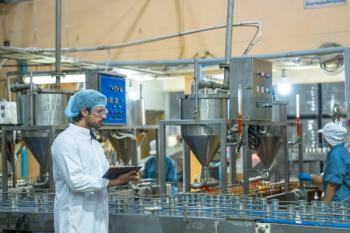Key Points
- New techniques overcome the limits of traditional spectroscopy in disordered and scattering materials.
- SLIM captures full beam profiles in real time for samples like silica nanoparticle suspensions.
- IC-scan and RICO-scan analyze speckle pattern shifts to reveal nonlinear refractive properties.
- These methods support breakthroughs in random lasers, thermal sensing, and biomedical optics.
Shining a Laser Through the Fog
Disordered and highly scattering materials—those that scramble light like fog or powdered glass—have long fascinated scientists for their strange optical behavior and potential for applications in random lasers, optical diagnostics, and even thermal sensing. But until recently, these chaotic systems remained difficult to study using traditional spectroscopy methods. Now, researchers Albert S. Reyna, Anderson M. Amaral, and Cid B. de Araújo from the Universidade Federal Rural de Pernambuco and Universidade Federal de Pernambuco (both Brazilian institutions) have introduced a trio of advanced techniques that can finally bring clarity to these foggy materials (1).
Published in the journal Photonics, their study outlines how these new nonlinear (NL) optical methods—scattered light imaging method (SLIM), intensity correlation scan (IC-scan), and reflection intensity Correlation scan (RICO-scan)—enable detailed spectroscopic analysis of opaque, disordered media once considered too complex to probe accurately (1,2).
Breaking the Limits of Traditional Nonlinear Spectroscopy
Traditional NL techniques like Z-scan and wave-mixing rely on uniform sample conditions and assume the transmission of light through the medium. However, in highly scattering materials such as colloids, glasses, and biological samples, this is not feasible due to multiple scattering and spatial irregularities. In such environments, conventional setups fail to differentiate between nonlinear absorption and scattering effects (1,2).
Recognizing these limitations, the researchers developed SLIM, IC-scan, and RICO-scan specifically for samples that frustrate standard techniques. As the authors describe, “nonlinear measurements can be challenging” when samples suffer from photobleaching, structural damage, or severe distortion of light beams (1).
Scattered Light Imaging Method (SLIM): A Broader View
The SLIM technique captures side-view images of a laser beam as it moves through scattering samples like silica nanoparticle suspensions. These snapshots offer a wealth of information—beam divergence, waist position, and extinction data—all in a single shot. This ability to work even at the single-pulse level makes SLIM especially useful for fragile or heat-sensitive materials (1).
Unlike the Z-scan, which requires multiple exposures, SLIM enables real-time analysis of how intense laser light interacts with complex, turbid media. As detailed in the study, SLIM is ideally suited for samples with significant transverse light scattering and thicknesses on the order of centimeters (1).
IC-Scan and RICO-Scan: Mapping the Speckle
In contrast, the IC-scan and RICO-scan techniques rely on analyzing the statistical behavior of speckle patterns—randomized light intensity fields generated when coherent light reflects off rough or disordered surfaces. By measuring how these speckles shift with changes in laser intensity, the researchers can infer the nonlinear refractive indices of various materials (1).
IC-scan focuses on transmitted light, while RICO-scan analyzes reflected patterns. Both methods are suitable for thin or weakly scattering samples, expanding the toolbox for probing materials such as metal colloids, powders, and biological tissues (1).
Broader Implications for Disordered Photonics
These techniques are not merely academic; they have far-reaching implications for industries and research fields. The precise measurement of NL optical parameters in chaotic media opens doors to innovations in random lasers, optical thermometry, and nonlinear biomedical imaging. According to the authors, these methods can characterize “turbid colloids, rough opaque surfaces, and even glassy and crystalline powders” (1).
Backed by experimental results and theoretical validation using nonlinear Fresnel equations, these tools are poised to become foundational in the growing field of disordered photonics.
References
(1) Reyna, A. S.; Amaral, A. M.; de Araújo, C. B. Emerging Techniques for Nonlinear Optical Spectroscopy of Disordered and Highly Scattering Materials. Photonics 2024, 11 (7), 650. DOI: 10.3390/photonics11070650
(2) Wang, Q.; Xu, J.; Xie, R. H. Nonlinear Optics of Nanoparticles and Nanocomposites. In Encyclopedia of Nanoscience and Nanotechnology; Nalwa, H. S., Ed.; American Scientific Publishers: Stevenson Ranch, CA, 2004; Vol. 7, pp 101–111.






